How to get from Blues to Jazz - Part 2
Published on 26 January 2016
For more information from the source site of this video please visit: http://secretguitarteacher.com/youtube/intermediate/jazz/_w8h9dohHCk/91902415-how-to-get-from-blues-to-jazz-2.php
This is a sample lesson from the Secret Guitar Teacher website (see link above). The lesson comes from a course called 'From Blues to Jazz' which can be found in the Intermediate section of the site.
So this is not for beginners and does assume some knowledge of basic music theory and the basic ability to improvise.
Here's the abridged transcript:
OK, lets turn our attention to the lead guitar for Blues in Bb. Here's the end result of the first step.
So the first bar we play an ascending Bb7 arpeggio. Then, thinking of the chord formula 1 3 5 b7 we play the third with the first finger at the 5th fret on the A string, the fifth with the pinky on the A string at fret 8.Then we bring our first finger up a fret to play the flat 7th at fret 6 on the D string so we can use our third finger to play the root note at fret 8 on the D string.Then carry straight on with the top octave... third, fifth.
Ok, here's a visual of the arpeggio pattern we are using in the first bar. If needed, pause the video to keep this on screen while you groove that in.
For bar two, over the chord Eb7 we play the Eb7 arpeggio pattern but, so as to link it smoothly with the first bar, we play this descending from the flat 7th note at fret 9 on the top E string.
So after the Bb7 ascending arpeggio in the first bar we can simply jump the pinky across to fret 9 on the top string - that's our flat 7th in the new arpeggio pattern of Eb7 - we can then come back down to play the fifth at fret 6 on the top E string with our first finger...
Next we find the third with our third finger at fret 8 on the B string and fold or jump the finger across to catch the root note at fret 8 on the G string.Then it's on down to the b7 using the first finger at fret 6 on the G string. Then we need to make a little shift in our fingering by using the pinky to play the fifth note on the D string at fret 8 allowing us to pick up the third with our index finger fret 5 on the D string and finish this chord with the root played with the second finger at fret 6 on the A string.
Alright - onto the seventh bar where we play a Bb7 arpeggio ascending for one bar. Then come back down a G7 arpeggio using the 'D7' shape Now this is a trickier pattern to finger, so take your time.
Start on the 2nd finger fret 7 on the top E string this actually gives you the third in the G7 arpeggio so we then bring the pinky down to play the root note at fret 8 on the B string. The flat7 is then played with the 2nd finger at fret 6 on the B string then the pinky again comes down a position to take the fifth note which is at fret 7 on the G string. Then we hit the third at fret 4 on the G string with our first finger and then again shift position, this time bringing our third finger down to play the Root at fret 5 on the D string we then move on down the arpeggio to play the b7 with our first finger at fret 3 on the D string and the fifth at fret 5 on the A string.
Ok, this sets us up nicely for the Cmin7 arpeggio played from the Root note C at fret three on the A string.
Having played the Cm7 arpeggio ascending, we can then come down the F7 arpeggio in exactly the same pattern as we used for the G7 arpeggio just now
Ok - we're nearly there, but let's just consolidate and go over those ten bars a few times to get them grooved in. Here's a reminder for you:
Now remember that the sequence now repeats the 1 6 2 5 changes twice as quickly. So we are simply going to play our ascending Bb7 over bar 11 ignoring the change to G7 and then we are going to also ignore the Cmin7 and jump straight to the F7 arpeggio played descending from the third note at fret 10 on the B string using the 'A' shape. On the descending F7 arpeggio you should try and start on your pinky and then use your 3rd finger to shift in and play the root at fret 10 on the G string, 3rd finger can then play the flat 7 at fret 8 on the same string and the pinky then comes in again to play the 5th at fret 10 on the D string leaving your first finger set up to take the 3rd note at fret 7 on the D string The third finger then comes in to take the root at fret 8 on the A string first finger the flat 7 at fret 6 and finally the pinky again for the 5th at fret 8 on the E string leaving you correctly set up to take the Bb root on your 2nd finger for the restart of the 12-bar.
Okay, so that's the whole 12 bar mapped out in flowing arpeggio patterns. Here's the guide to help you practice this.
In the next lesson, we'll look at how we can then use this arpeggio exercise as a great platform from which to create some great improvising ideas.
OK, I look forward to seeing you then, meanwhile here's the backing track for you.
 TAKE FIVE - Guitar LESSON - SOLO - Paul Desmond's...
TAKE FIVE - Guitar LESSON - SOLO - Paul Desmond's...
 Jazz Guitar Lessons - Inversion Excursion - C Majo...
Jazz Guitar Lessons - Inversion Excursion - C Majo...
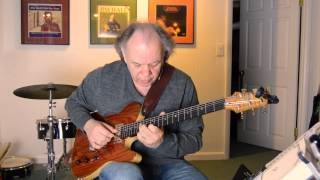 Carl Filipiak 8 Bar Jazz/Blues Lesson 2- Comping C...
Carl Filipiak 8 Bar Jazz/Blues Lesson 2- Comping C...
 II V I - Jesse Van Ruller #3
II V I - Jesse Van Ruller #3
 A Study in Minor II-Vs - Barry Greene Lesson Previ...
A Study in Minor II-Vs - Barry Greene Lesson Previ...
 AFTER YOU'VE GONE - Guitar Lesson - Chord Melody J...
AFTER YOU'VE GONE - Guitar Lesson - Chord Melody J...
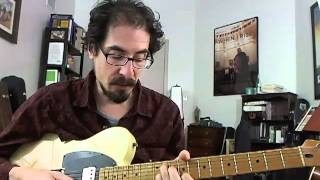 50 Jazz Blues Licks - #31 Hank Jones - Guitar Less...
50 Jazz Blues Licks - #31 Hank Jones - Guitar Less...
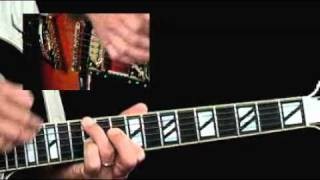 A Touch of Bop #3 - Jazz Up Your Blues - Jazz Blue...
A Touch of Bop #3 - Jazz Up Your Blues - Jazz Blue...
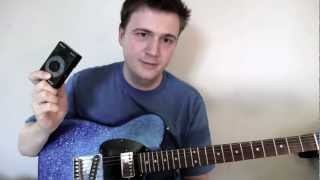 Jazz Guitar: Double-Time Improvisation - Exercises
Jazz Guitar: Double-Time Improvisation - Exercises
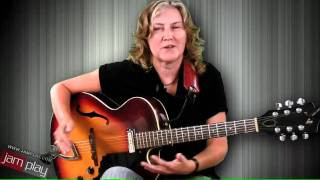 Jane Miller Jazz Guitar Lessons
Jane Miller Jazz Guitar Lessons







